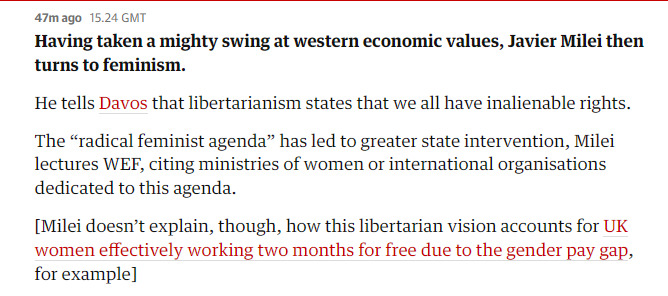Image is of legal adviser to Israel’s foreign ministry Tal Becker and British jurist Malcolm Shaw at the ICJ hearing.
The ICJ case against Israel might not achieve much for the Palestinian cause directly, given that Israeli politicians have explicitly stated that the Hague will not stop them - and I believe them. The Resistance will be what stops them, and they are doing quite well for themselves. Hezbollah has hit highly sensitive and important Israeli military sites over the last couple weeks, and in general persist in several border attacks every day. The battles in Iraq and Syria also continue. Hamas remains largely intact, and is successfully forcing Israeli forces in the northern Gaza Strip to retreat, and other parts of the Gazan Resistance are continuing to battle down in Khan Yunis. And, last but not least, Yemen is firmly dedicated to the blockade, warding off another ship literally minutes before I started writing this paragraph.
What the ICJ is battling over isn’t Palestine and Israel - not really - but the legitimacy of international law itself, and to what degree victimized countries can rely on it to solve problems, versus needing to take more militant routes for justice. In a weird sense, it might be an L for Israel either way. If international law sides with Palestine, then when Israel refuses to stop, it will invalidate international law. If international law sides with Israel, then it will invalidate international law. There is no conceivable way for the West to come out of this looking good.
The South African portion detailing Israeli atrocities against Gaza was largely ignored by the western media. They have instead, obviously, decided to focus on the Israeli portion. Their defense appears to amount to “We didn’t do it, Hamas did it. And if we did do it, it doesn’t matter, because that’s just urban warfare for you. Please get this whole thing thrown out on a very dubious technicality so we don’t have to advance to the next stage.”
From Craig Murray, who has been physically going to the Hague:
It is important to realise this. Israel is hoping to win on their procedural points about existence of dispute, unilateral assurances and jurisdiction. The obvious nonsense they spoke about the damage to homes and infrastructure being caused by Hamas, trucks entering Gaza and casualty figures, was not serious. They did not expect the judges to believe any of this. The procedural points were for the court. The rest was mass propaganda for the media.
…I am sure the judges want to get out of this and they may go for the procedural points. But there is a real problem with Israel’s “no dispute” argument. If accepted, it would mean that a country committing genocide can simply not reply to a challenge, and then legal action will not be possible because no reply means “no dispute”. I hope that absurdity is obvious to the judges. But they may of course wish not to notice it…
What do I think will happen? Some sort of “compromise”. The judges will issue provisional measures different to South Africa’s request, asking Israel to continue to take measures to protect the civilian population, or some such guff. Doubtless the State Department have drafted something like this for President of the court Donoghoe already.
I hope I am wrong. I would hate to give up on international law. One thing I do know for certain. These two days in the Hague were absolutely crucial for deciding if there is any meaning left in notions of international law and human rights. I still believe action by the court could cause the US and UK to back off and provide some measure of relief. For now, let us all pray or wish, each in our way, for the children of Gaza.
The weekly update is here on the website.
The Country of the Week is South Africa! Feel free to chime in with books, essays, longform articles, even stories and anecdotes or rants. More detail here.
The bulletins site is here!
The RSS feed is here.
Last week’s thread is here.
Israel-Palestine Conflict
Sources on the fighting in Palestine against Israel. In general, CW for footage of battles, explosions, dead people, and so on:
UNRWA daily-ish reports on Israel’s destruction and siege of Gaza and the West Bank.
English-language Palestinian Marxist-Leninist twitter account. Alt here.
English-language twitter account that collates news (and has automated posting when the person running it goes to sleep).
Arab-language twitter account with videos and images of fighting.
English-language (with some Arab retweets) Twitter account based in Lebanon. - Telegram is @IbnRiad.
English-language Palestinian Twitter account which reports on news from the Resistance Axis. - Telegram is @EyesOnSouth.
English-language Twitter account in the same group as the previous two. - Telegram here.
English-language PalestineResist telegram channel.
More telegram channels here for those interested.
Various sources that are covering the Ukraine conflict are also covering the one in Palestine, like Rybar.
Russia-Ukraine Conflict
Examples of Ukrainian Nazis and fascists
Examples of racism/euro-centrism during the Russia-Ukraine conflict
Sources:
Defense Politics Asia’s youtube channel and their map. Their youtube channel has substantially diminished in quality but the map is still useful.
Moon of Alabama, which tends to have interesting analysis. Avoid the comment section.
Understanding War and the Saker: reactionary sources that have occasional insights on the war.
Alexander Mercouris, who does daily videos on the conflict. While he is a reactionary and surrounds himself with likeminded people, his daily update videos are relatively brainworm-free and good if you don’t want to follow Russian telegram channels to get news. He also co-hosts The Duran, which is more explicitly conservative, racist, sexist, transphobic, anti-communist, etc when guests are invited on, but is just about tolerable when it’s just the two of them if you want a little more analysis.
On the ground: Patrick Lancaster, an independent and very good journalist reporting in the warzone on the separatists’ side.
Unedited videos of Russian/Ukrainian press conferences and speeches.
Pro-Russian Telegram Channels:
Again, CW for anti-LGBT and racist, sexist, etc speech, as well as combat footage.
https://t.me/aleksandr_skif ~ DPR’s former Defense Minister and Colonel in the DPR’s forces. Russian language.
https://t.me/Slavyangrad ~ A few different pro-Russian people gather frequent content for this channel (~100 posts per day), some socialist, but all socially reactionary. If you can only tolerate using one Russian telegram channel, I would recommend this one.
https://t.me/s/levigodman ~ Does daily update posts.
https://t.me/patricklancasternewstoday ~ Patrick Lancaster’s telegram channel.
https://t.me/gonzowarr ~ A big Russian commentator.
https://t.me/rybar ~ One of, if not the, biggest Russian telegram channels focussing on the war out there. Actually quite balanced, maybe even pessimistic about Russia. Produces interesting and useful maps.
https://t.me/epoddubny ~ Russian language.
https://t.me/boris_rozhin ~ Russian language.
https://t.me/mod_russia_en ~ Russian Ministry of Defense. Does daily, if rather bland updates on the number of Ukrainians killed, etc. The figures appear to be approximately accurate; if you want, reduce all numbers by 25% as a ‘propaganda tax’, if you don’t believe them. Does not cover everything, for obvious reasons, and virtually never details Russian losses.
https://t.me/UkraineHumanRightsAbuses ~ Pro-Russian, documents abuses that Ukraine commits.
Pro-Ukraine Telegram Channels:
Almost every Western media outlet.
https://discord.gg/projectowl ~ Pro-Ukrainian OSINT Discord.
https://t.me/ice_inii ~ Alleged Ukrainian account with a rather cynical take on the entire thing.
XI JINPING: “Western modernization was fraught with sanguineous crimes such as war, slave trade, colonization, and plunder, which inflicted untold misery on developing countries. Having suffered from aggression, bullying, and humiliation by Western powers, we Chinese are keenly aware of the value of peace and will never follow the beaten path of the West.”
“The biggest problems with Western modernization are that it is capital-centered rather than people-centered and that it seeks to maximize capital gains rather than serve the interests of the vast majority of the people.”milei at Davos:


“The Socialists maintain that we humans are damaging the planet and that it must be protected at all costs, even going as far as advocating for the bloody agenda of abortion”.
lmao?
I’m advocating for the late-term abortion of milei
not news exactly, but interesting article (well, excerpt from a book) with some insight on the Ukraine war, and more broadly about the difference between the Soviet/Russian and Western approaches to war (archived)
The Russian Art of War: How the West Led Ukraine to Defeat
Throughout the Cold War period, the Soviet Union saw itself as the spearhead of a historical struggle that would lead to a confrontation between the “capitalist” system and “progressive forces.” This perception of a permanent and inescapable war led the Soviets to study war in a quasi-scientific way, and to structure this thinking into an architecture of military thought that has no equal in the Western world. The problem with the vast majority of our so-called military experts is their inability to understand the Russian approach to war. It is the result of an approach we have already seen in waves of terrorist attacks—the adversary is so stupidly demonized that we refrain from understanding his way of thinking. As a result, we are unable to develop strategies, articulate our forces, or even equip them for the realities of war. The corollary of this approach is that our frustrations are translated by unscrupulous media into a narrative that feeds hatred and increases our vulnerability. We are thus unable to find rational, effective solutions to the problem.
The way Russians understand conflict is holistic. In other words, they see the processes that develop and lead to the situation at any given moment. … The reason the Russians are better than the West in Ukraine is that they see the conflict as a process; whereas we see it as a series of separate actions. … That is why we place the start of the conflict on February 24, 2022, or the start of the Palestinian conflict on October 7, 2023. We ignore the contexts that bother us and wage conflicts we do not understand.
Correlation of Forces
spoiler
This [holistic] approach is materialized by the concept of “correlation of forces” (Соотношение сил). Often translated as “balance of forces” or “ratio of forces,” this concept is only understood by Westerners as a quantitative quantity, limited to the military domain. In Soviet thinking, however, the correlation of forces reflected a more holistic reading of war:
- In the economic sphere, the factors usually compared are gross national product per capita, labor productivity, the dynamics of economic growth, the level of industrial production, particularly in high-tech sectors, the technical infrastructure of the production tool, the resources and degree of qualification of the workforce, the number of specialists and the level of development of theoretical and applied sciences.
- In the military field, the factors compared are the quantity and quality of armaments, the firepower of the armed forces, the fighting and moral qualities of the soldiers, the level of staff training, the organization of the troops and their combat experience, the character of the military doctrine and the methods of strategic, operative and tactical thinking.
- In the political sphere, the factors that come into consideration are the breadth of the social base of state authority, its organization, the constitutional procedure for relations between the government and legislative bodies, the ability to take operational decisions, and the degree and character of popular support for domestic and foreign policy.
- Finally, when assessing the strength of the international movement, the factors taken into consideration are its quantitative composition, its influence with the masses, its position in the political life of each country, the principles and norms of relations between its components and the degree of their cohesion.
In other words, the assessment of the situation is not limited to the balance of forces on the battlefield, but takes into account all the elements that have an impact on the evolution of the conflict. Thus, for their Special Military Operation, the Russian authorities had planned to support the war effort through the economy, without moving to a “war economy” regimen. Thus, unlike in Ukraine, there was no interruption in the tax and welfare mechanisms. … The inclusion of the correlation of forces in the decision-making process is a fundamental difference from Western decision-making processes, which are linked more to a policy of communication than to a rational approach to problems. This explains, for example, Russia’s limited objectives in the Ukraine, where it does not seek to occupy the entire territory, as the correlation of forces in the western part of the country would be unfavorable.
Consider all the factors that directly or indirectly influence the conflict. Conversely, as we have seen in Ukraine and elsewhere, Westerners have a much more political reading of the war, and end up mixing the two. This is why communication plays such an essential role in the conduct of war: the perception of the conflict plays an almost more important role than its reality. This is why, in Iraq, the Americans literally invented episodes that glorified their troops.
the The Special Military Operation in Ukraine section has an overview of the events leading up to the war, going over the initial events in 2014 and subsequent Ukrainian aggression, but it’s pretty long so I’m not going to directly quote here
The Objectives and Strategy of Russia
spoiler
The problem is that our “experts” themselves define Russia’s objectives according to what they imagine, only to be able to say that it has not achieved them. So. Let us get back to the facts. On February 24, 2022, Russia launched its “Special Military Operation” (SMO) in Ukraine “at short notice.” In his televised address, Vladimir Putin explained that its strategic objective was to protect the population of Donbass. This objective can be broken down into two parts: “demilitarize” the Ukrainian armed forces regrouped in the Donbass in preparation for the offensive against the DPR and LPR; and “denazify” (i.e. “neutralize”) the ultra-nationalist and neo-Nazi paramilitary militias in the Mariupol area.
The formulation chosen by Vladimir Putin has been very poorly analyzed in the West. It is inspired by the 1945 Potsdam Declaration, which envisaged the development of defeated Germany according to four principles: demilitarization, denazification, democratization and decentralization. The Russians understand war from a Clausewitzian perspective: war is the pursuit of politics by other means. This then means that they seek to transform operational successes into strategic successes, and military successes into political objectives. So, while the demilitarization evoked by Putin is clearly linked to the military threat to the populations of the Donbass in application of the decree of March 24, 2021, signed by Zelensky … this objective conceals a second: the neutralization of Ukraine as a future NATO member. … Zelensky’s proposal served as the basis for the Istanbul Communiqué of March 29, 2022, a ceasefire agreement as a prelude to a peace agreement. … In essence, Russia agreed to withdraw to the borders of February 23, 2022, in exchange for a ceiling on Ukrainian forces and a commitment not to become a NATO member, along with security guarantees from a number of countries…. Two conclusions can be drawn:
- Russia’s objective was not to conquer territory. If the West had not intervened to push Zelensky to withdraw his offer, Ukraine would probably still have its army.
- While the Russians intervened to ensure the security and protection of the population of the Donbass, their SMO enabled them to achieve a broader objective, which involves Russia’s security.
The problem is that Ukrainian and Western analysis is fueled by their own narratives. The conviction that Russia will lose has meant that no alternative contingency has been prepared. In September 2023, the West, beginning to see the collapse of this narrative and its implementation, tried to move towards a “freeze” in the conflict, without taking into account the opinion of the Russians, who dominate on the ground. Yet Russia would have been satisfied with a situation such as that proposed by Zelensky in March 2022. What the West wants in September 2023 is merely a pause until an even more violent conflict breaks out, after Ukrainian forces have been rearmed and reconstituted.
Women and Minorities Bear the Brunt of Medical Misdiagnosis | naked capitalism
In a study published Jan. 8 in JAMA Internal Medicine, researchers found that nearly 1 in 4 hospital patients who died or were transferred to intensive care had experienced a diagnostic error. Nearly 18% of misdiagnosed patients were harmed or died.
In all, an estimated 795,000 patients a year die or are permanently disabled because of misdiagnosis, according to a study published in July in the BMJ Quality & Safety periodical.
Women and racial and ethnic minorities are 20% to 30% more likely than white men to experience a misdiagnosis, said David Newman-Toker, a professor of neurology at Johns Hopkins School of Medicine and the lead author of the BMJ study. “That’s significant and inexcusable,” he said.
Researchers call misdiagnosis an urgent public health problem. The study found that rates of misdiagnosis range from 1.5% of heart attacks to 17.5% of strokes and 22.5% of lung cancers.
Maternal mortality for Black mothers has increased dramatically in recent years. The United States has the highest maternal mortality rate among developed countries. According to the Centers for Disease Control and Prevention, non-Hispanic Black mothers are 2.6 times as likely to die as non-Hispanic white moms. More than half of these deaths take place within a year after delivery.
Research shows that Black women with childbirth-related heart failure are typically diagnosed later than white women, said Jennifer Lewey, co-director of the pregnancy and heart disease program at Penn Medicine. That can allow patients to further deteriorate, making Black women less likely to fully recover and more likely to suffer from weakened hearts for the rest of their lives.
Racial and gender disparities are widespread.
Women and minority patients suffering from heart attacks are more likely than others to be discharged without diagnosis or treatment.
Black people with depression are more likely than others to be misdiagnosed with schizophrenia.
Minorities are less likely than whites to be diagnosed early with dementia, depriving them of the opportunities to receive treatments that work best in the early stages of the disease.
Misdiagnosis isn’t new. Doctors have used autopsy studies to estimate the percentage of patients who died with undiagnosed diseases for more than a century. Although those studies show some improvement over time, life-threatening mistakes remain all too common, despite an array of sophisticated diagnostic tools, said Hardeep Singh, a professor at Baylor College of Medicine who studies ways to improve diagnosis.
“The vast majority of diagnoses can be made by getting to know the patient’s story really well, asking follow-up questions, examining the patient, and ordering basic tests,” said Singh, who is also a researcher at Houston’s Michael E. DeBakey VA Medical Center. When talking to people who’ve been misdiagnosed, “one of the things we hear over and over is, ‘The doctor didn’t listen to me.’”
Racial disparities in misdiagnosis are sometimes explained by noting that minority patients are less likely to be insuredthan white patients and often lack access to high-quality hospitals. But the picture is more complicated, said Monika Goyal, an emergency physician at Children’s National Hospital in Washington, D.C., who has documented racial bias in children’s health care.
In a 2020 study, Goyal and her colleagues found that Black kids with appendicitis were less likely than their white peers to be correctly diagnosed, even when both groups of patients visited the same hospital.
Demanding schedules, which prevent doctors from spending as much time with patients as they’d like, can contribute to diagnostic errors, said Karen Lutfey Spencer, a professor of health and behavioral sciences at the University of Colorado-Denver. “Doctors are more likely to make biased decisions when they are busy and overworked,” Spencer said. “There are some really smart, well-intentioned providers who are getting chewed up in a system that’s very unforgiving.”
Doctors make better treatment decisions when they’re more confident of a diagnosis, Spencer said.
In an experiment, researchers asked doctors to view videos of actors pretending to be patients with heart disease or depression, make a diagnosis, and recommend follow-up actions. Doctors felt far more certain diagnosing white men than Black patients or younger women.
“If they were less certain, they were less likely to take action, such as ordering tests,” Spencer said. “If they were less certain, they might just wait to prescribe treatment.”
It’s easy to see why doctors are more confident when diagnosing white men, Spencer said. For more than a century, medical textbooks have illustrated diseases with stereotypical images of white men. Only 4.5% of images in general medical textbooks feature patients with dark skin.
That may help explain why patients with darker complexions are less likely to receive a timely diagnosis with conditions that affect the skin, from cancer to Lyme disease, which causes a red or pink rash in the earliest stage of infection. Black patients with Lyme disease are more likely to be diagnosed with more advanced disease, which can cause arthritis and damage the heart. Black people with melanoma are about three times as likely as whites to die within five years.
The covid-19 pandemic helped raise awareness that pulse oximeters — the fingertip devices used to measure a patient’s pulse and oxygen levels — are less accurate for people with dark skin. The devices work by shining light through the skin; their failures have delayed critical care for many Black patients.

America could produce as many doctors as we do teachers each year, but we choose not to to artificially inflate doctors’ salaries through artificial scarcity, lobbied and controlled by the AMA.
Almost everyone I knew in high school who is a doctor now (like two decades later) were known cheaters/plagiarists.

Access, equity and solidarity: the foundations of Cuba’s health system : Peoples Dispatch
Cuba has the highest ratio of doctors per inhabitant in the world. We have more than 100,000 doctors for a population of 11 million – 9.2 for every 1,000 inhabitants. We also have the highest ratio of health workers per inhabitant – 500,000 overall. But it’s not that we have leftover professionals. We don’t have so many doctors because we like training them, but because we have a health policy that employs all of them. This includes those who are in management positions and those who are committed to our international solidarity missions, our collaboration in health.
AES countries were generally known for having good doctors even if, dependent on time and place, the healthcare systems could lack resources. I think a large part of the reason for that is that the medical profession was “proletarianised”. Intake to medical school was more open to students from non-PMC backgrounds than in the west, and although being celebrated and cherished doctors were paid more moderately and lived more like their patients did. Doctors were also expected to go to serve remote, underdeveloped or otherwise non-glamorous communities which gave them good practical experience and prevented them from developing God complexes.
Comparing the lemmy.ml and lemmy.world front pages right now is sort of terrifying.
-
AfD plans to turn Germany into authoritarian state, vice-chancellor warns
-
US forces strike Houthi sites in Yemen as Biden says allied action hasn’t yet stopped ship attacks
-
North Korea training, providing weapons to Hamas, Hezbollah, and Houthis
-
Britain has flown 50 spy missions over Gaza in support of Israel
-
Infertility: Chemical substances omnipresent in everyday life are among the causes
Reasonable enough, right? Now compare it to lemmy.world:
-
Washington to Israel: Turn the lights back on in Gaza
-
NATO admiral warns of potential all-out war with Russia
-
Netanyahu Says ‘From the River to the Sea,’ a Phrase Zionists Claim is Genocidal
-
Putin could attack NATO in ‘5 to 8 years,’ German defense minister warns
-
Poland is ‘Next’ After Russia Wins Ukraine War, Putin Ally Says
THREE OUT OF FIVE ARTICLES are just blatant warmongering trying to manifest a future Russia-NATO war. And this is a community that is supposed to be less extreme than Reddit’s group of bloodthirsty clowns.
they left reddit because of some app ideoly… not the content…
The Reddit Exodus was pretty funny. Communist social media developers plugged their app in the right place at the right time, a mass migration took place, and only after the migration did the Redditors realize they were Communists. Then we got to have a full blown Red Scare and all of the anti-comminists filtered themselves into a handful of shit instances
-
There’s been a lot of talk about the production capacity gap between Russia and NATO as it relates to artillery rounds specifically. Russia has retooled its economy and invested heavily in wartime production and is currently seeing it pay dividends both on the battlefield but also in the overall health of their economy. Meanwhile the NATO nations have refused to make the investment in restarting mass production of rounds, a capability liquidated and sold off under the guiding principles of neoliberalism, and instead has solely relied on draining existing stockpiles bits at a time. The result has been catastrophic for the Ukrainians tasked with dying on NATO’s behalf ever since the initial blitz push from the RusFed was repelled and the war has settled into a WWI style trench and artillery game of attrition.
I think though that we shouldn’t confuse an unwillingness with an inability. There’s no reason to believe that the US or Germany are incapable of making the investment to restart the mass production of artillery shells (or any mass produced weapon of war rather than the big ticket, hyper specialized war toys they prefer now). There’s an entire point to be made that in this moment of profitability crisis the only industries that are succeeding are the ones hand chosen by the state to be made so with direct subsidies and funding (re: Brenner & Riley’s Seven Theses in which they attempt to coin “political capitalism” as the new economic model post-neoliberalism). The general consensus seems to be that there’s so far been an unwillingness to commit to the production process because it’s been thought that the Russo-Ukrainian war will end before the investment will be worthwhile and then the general style of combat will return to anti-insurgency missions relying on drones and laser guided munitions rather than mass produced dumb bombs and shells. My fear is that if this calculation changes and there is heavy investment in restarting the NATO war machine it puts us on the path towards another world war. The European nations may see the success of the Russian economy under wartime policies and see the return of a military Keynesianism as an appealing out to their financial woes but, as we know from the start of the previous century, you can only build up your stock of weapons for so long before the imperative to use them arises. I’m worried that the long duree trends of the 21st century see the return of both multipolarity as well as great powers conflicts, but this time we have nukes. Guess there’s nothing to really do about it tho but enjoy the view

A big question really is whether Biden represents the beginning of an industrialization trend, or instead a high water mark that will be reversed by the Republicans, whether they come into power in 2024 or 2028. I genuinely don’t know.
While I think there’s a ton of inertia in the imperial core that prevents much industrialization and production of actually effective mass-produceable military gear occurring, it’s also a tremendous mistake to believe that countries are forever locked into their current path and that fundamentally nothing will change; basically hardcore capitalist realism. I think Kaplya is correct in saying that it would require a revolution (of the industrialists overthrowing the financialists; essentially a different form of fascism) for this to actually occur. The US can do bits and pieces of industrialization here and there, but as soon as the green shoots start to grow above a certain height, the lawnmower of financialism cuts them down for immediate profit. I also agree that therefore the US will try as long as physically possible to fight China and friends via financial methods; maintaining staggering levels of debt, cutting off countries from financial institutions, etc etc. I’m much more optimistic than Kaplya is about it, but even I admit that the ultimate victor is far from certain. It’s like saying to somebody in early 1914: “Alright, there’s gonna be a massive war soon that engulfs Europe. Give me your predictions for the next 40 years.” How many people would predict the state of the world in 1950, even moderately correctly, even with the superpower of historical materialism and Marxist analysis? An entire fucking communist superpower rises up out of a feudal backwater and is the primary rival of the United States, the major capitalist power on Earth, unseating the British Empire! For all we fucking know, the current war in Palestine leads to the fall of Israel and then the propagation of communist revolutions across the Middle East, leading to a federated superpower that goes to war with Europe or something, and virtually nobody is predicting that that’s going to happen.
Will the US be the Russian Empire of WW1 and just collapse under the weight of a system that cannot adapt and develop its productive capacities fast enough before internal forces rip it apart, or will it be the British Empire of WW1, and break economic orthodoxies like the gold standard to become an industrial juggernaut and extend its reign for another few decades longer?
as a side note, It’s been pretty interesting to see how journalists and analysts have largely gotten behind government subsidies and nearshoring/friendshoring given that the last three decades (as in, virtually entire adult lives of even your typical middle-aged analysts) has been dominated by “free markets” and globalization. it’s not surprising, western media exists in total subservience to the US government as it’s all state propaganda, but even given that, it seemed to me a rather painless shift from “the free market will solve everything and if you think governments should have any economic role then you’re a commie” to “yeah actually the government investing hundreds of billions of dollars into infrastructure and factories is cool and good”









